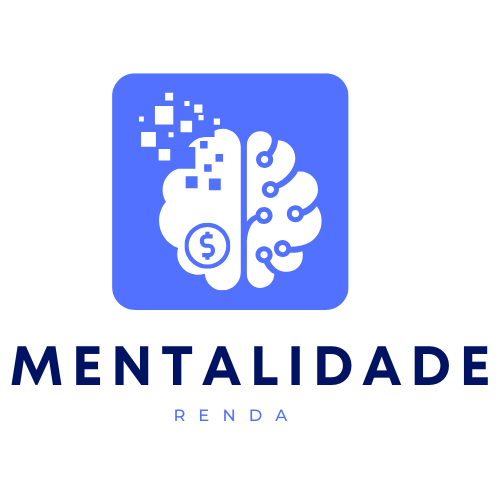In today’s busy world, managing tasks efficiently is key to maintaining productivity and achieving goals. However, creating and managing task lists can be overwhelming without the right tools. Fortunately, Artificial Intelligence (AI) offers powerful solutions to help you create organized task lists, prioritize effectively, and automate routine activities. In this article, we’ll explore how you can use AI to create task lists and boost your efficiency, ensuring that you stay organized and focused.

1. Automate Task List Creation
Efficiency: AI can help you automate the process of creating task lists, making it easier to manage your daily responsibilities. By integrating AI with your workflow, you can automatically generate to-do lists based on your needs and schedules.
How AI helps with task list creation:
- Google Assistant & Siri: These AI-powered virtual assistants can create to-do lists with voice commands. For example, you can say, “Hey Google, add ‘call Sarah’ to my to-do list,” and the assistant will automatically create a task. It can also set reminders for each task and update the list when needed.
- Todoist: Todoist integrates AI to automatically categorize tasks and offer smart suggestions based on your previous activity. You can input tasks manually or use AI suggestions to add them to your list quickly.
- Trello with Butler: Trello’s Butler automation can help you create task lists automatically based on predefined triggers. For example, when a new project is added, Butler can create a series of tasks to break it down into manageable steps.
Why use it:
AI can save you time by eliminating the need to manually input tasks. By automating task list creation, you can quickly organize your day and start working right away.
2. Prioritize Tasks with AI Assistance
After creating a task list, it’s important to know what to focus on first. AI can help prioritize your tasks based on urgency, deadlines, or importance, ensuring you spend time on the most crucial activities.
How AI helps with prioritizing tasks:
- Todoist: Todoist uses AI to analyze your tasks and suggest the order in which you should complete them. Tasks that are urgent or have upcoming deadlines are prioritized automatically.
- Google Assistant: Google Assistant can help you prioritize tasks based on calendar events and reminders. It will suggest which tasks to complete first based on your schedule, helping you stay on track.
- Trello with Butler: Butler in Trello can automate task prioritization by moving tasks into a “high priority” list based on specific rules, such as deadlines or assigned labels.
Why use it:
AI-powered prioritization ensures that you focus on what matters most, reducing the mental load of deciding which tasks to tackle first. This leads to better time management and improved efficiency.
3. Automate Repetitive Tasks to Save Time
Repetitive tasks often consume significant time. AI can automate many of these activities, freeing you up to focus on more important, creative, or strategic tasks.
How AI automates repetitive tasks:
- Zapier: Zapier is a popular tool that connects different apps and automates workflows. For example, you can set up automation to create a task in Trello every time a new email arrives in your inbox, or automatically update your Google Sheets with new data from a form submission.
- IFTTT: Similar to Zapier, IFTTT lets you create simple workflows between apps. For example, you can set it to automatically log your tasks from Google Calendar into your task manager or remind you of recurring tasks.
- Trello with Butler: In Trello, Butler can automate recurring tasks by setting up rules like adding a new task to your board every Monday or reminding you about specific tasks on a set schedule.
Why use it:
Automating repetitive tasks allows you to focus on higher-value activities, ultimately saving you time and boosting productivity by reducing manual effort.
4. Use AI for Time Management and Task Optimization
Proper time management is essential for efficiency, and AI can optimize how you allocate your time. AI tools can help you track your tasks, suggest the best times to complete them, and even remind you about pending tasks.
How AI improves time management:
- RescueTime: RescueTime tracks your computer and smartphone usage, giving you insights into how much time you’re spending on different tasks and websites. It then suggests ways to optimize your schedule by identifying areas where you might be wasting time.
- Clockwise: Clockwise is an AI tool that helps optimize your calendar by automating the process of finding the best time blocks for meetings and focused work. It adjusts your schedule in real time, ensuring that your day is as efficient as possible.
- Google Calendar: Google Calendar integrates with AI to suggest the best times for meetings or focused work based on your past behavior and calendar events. It also adjusts your day dynamically to minimize conflicts.
Why use it:
AI-driven time management tools help you allocate your time wisely, optimize your workflow, and reduce inefficiencies, ensuring that you’re spending your time on the right tasks at the right moments.
5. Track Progress and Stay Accountable
Tracking progress is essential for staying on top of your goals. AI can monitor how well you’re completing tasks, offer real-time feedback, and even suggest improvements, helping you stay accountable.
How AI tracks progress:
- Habitica: Habitica turns your task list into a game, rewarding you with points for completing tasks and helping you stay accountable. AI-driven progress tracking keeps you motivated by offering feedback on your performance.
- Trello and ClickUp: These project management tools use AI to track the completion of tasks and monitor deadlines. AI tools in Trello and ClickUp send reminders about incomplete tasks and suggest when to move forward with specific actions.
- RescueTime: RescueTime’s AI-based analytics help you track the time spent on tasks and evaluate your productivity. By understanding how you’re spending your time, RescueTime suggests adjustments to help you work more efficiently.
Why use it:
AI-powered progress tracking and accountability features help ensure that you stay on track and meet deadlines. By receiving regular feedback, you can continuously optimize your workflow and improve your efficiency.
6. Stay Focused with AI-Driven Distraction Management
Staying focused is one of the most important factors in boosting efficiency. AI tools can help you minimize distractions and keep you focused on your tasks.
How AI helps you stay focused:
- Forest: Forest is an AI-powered app that encourages you to stay off your phone by growing a virtual tree as long as you remain focused. If you get distracted and leave the app, your tree dies. This gamified approach helps maintain focus.
- Focus@Will: Focus@Will uses AI to provide customized music that helps improve focus and productivity. Based on your preferences, the AI suggests specific genres or playlists designed to reduce distractions and keep you focused.
- Freedom: Freedom helps you stay focused by blocking distracting websites and apps across all devices. It uses AI to ensure you are not diverted from your tasks, allowing you to work uninterrupted.
Why use it:
AI-driven distraction management tools help you maintain focus by eliminating digital interruptions, allowing you to complete tasks more efficiently and avoid the productivity drain caused by distractions.
Conclusion
Using AI to create task lists and boost your efficiency is a powerful way to streamline your workflow and ensure that you remain organized and focused. AI-powered tools can automate task creation, prioritize effectively, optimize your schedule, and help you stay accountable, all while eliminating time-consuming distractions.
By integrating AI tools like Todoist, RescueTime, Google Assistant, and Forest into your daily routine, you can improve time management, stay on top of your responsibilities, and maximize your productivity. The end result is more efficient workdays, allowing you to accomplish more in less time while staying organized and on track with your goals.
